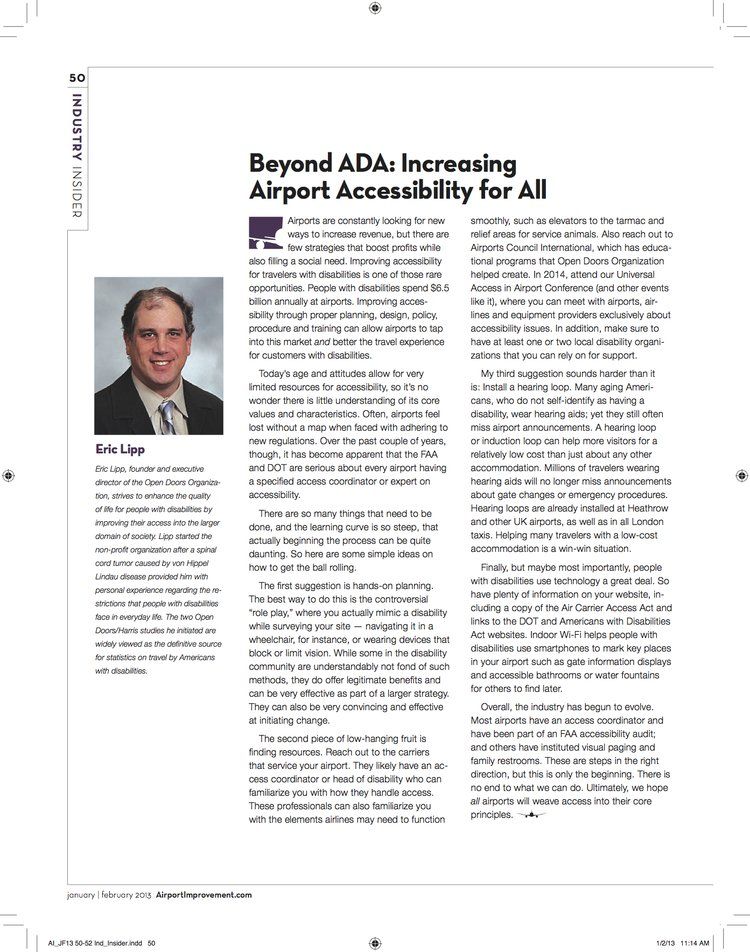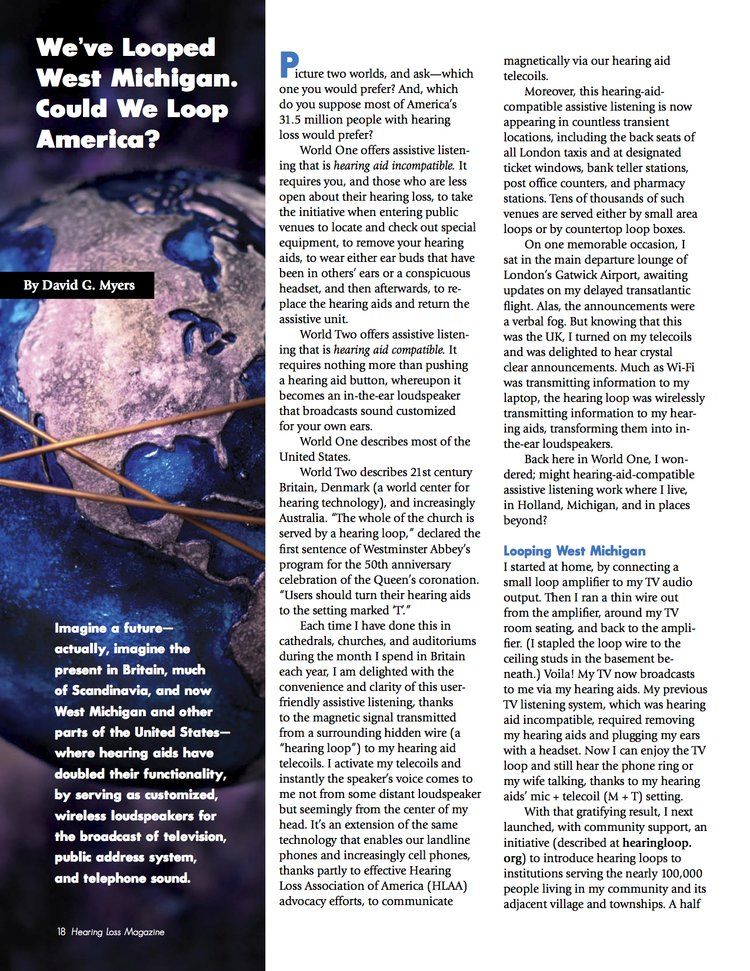Blog Layout
Beyond ADA: Increasing Airport Accessibility for All
January 15, 2020
Originally Published in Airport Improvement Magazine

January 15, 2020
“Monroe County Executive Cheryl Dinolfo was today joined by representatives from Hearing Loop Systems (HLS) and the Hearing Loss Association of America (HLAA) to unveil new enhanced communications technologies now available at the Greater Rochester International Airport (ROC). The technologies, which are components of Monroe County’s ongoing ROC Renovation Project, include “smart” color-coded LED lighting to promote visual cueing for all passengers in the gate area, in addition to terminal-wide hearing loops and counter loops installed at key locations to assist deaf or hard-of-hearing guests.” Read the Full Press Release at rocrenovation.com.
January 15, 2020
By Rob Rinderman At street level, beneath what can candidly be described as a funky, multi-tiered pyramid structure that also doubles as a Manhattan residential apartment building (designed by renowned Danish architect Bjarke Ingels and colleagues), is The Landmark at 57 West. Debuting in mid-September 2017, this is the newest location of the Landmark Theatres chain, the only exhibitor with a national footprint dedicated primarily to showcasing independent movies. Landmark is also a marketer of indie films through its sister company, Magnolia Pictures, a theatrical and home distribution company. Keep reading on The Film Journal International
January 15, 2020
Michael Kamber for The New York Times – After he lost much of his hearing last year at age 57, the composer Richard Einhorn despaired of ever really enjoying a concert or musical again. Even using special headsets supplied by the Metropolitan Opera and Broadway theaters, he found himself frustrated by the sound quality, static and interference. Then, in June, he went to the Kennedy Center in Washington, where his “Voices of Light” oratorio had once been performed with the National Symphony Orchestra, for a performance of the musical “Wicked.” There were no special headphones. This time, the words and music were transmitted to a wireless receiver in Mr. Einhorn’s hearing aid using a technology that is just starting to make its way into public places in America: a hearing loop. Download the PDF to read more
January 15, 2020
By Cassidy Riley The University of Iowa has plans in the works to install hearing-loop technology in several buildings around campus, and while more expensive than older technology, official say the quality is worth it. By simply switching a hearing aid or cochlear implant to the “T” setting, the hearing-loop system will send the sounds in a room directly to the hearing aid or implant. In the past, the UI has relied on personal FM systems. Traditionally, a person with a hearing impairment would have an FM system that they would wear headphones with and a speaker would speak into a microphone connected to a transmitter sending signals to the FM system device. The UI has installed this new hearing loop technology in the B111 Medical Laboratories. The installation cost was roughly $10,000 one time. Personal FM systems can cost more than $500 each. Continue Reading on The Daily Iowan
January 15, 2020
By Stephen Pradarelli Carly Armour isn’t one to shrink from challenges. The University of Iowa disability adviser bought snowshoes her first winter in Iowa after moving from her native Georgia six years ago. Born profoundly deaf in both ears, she has also taken advantage of a wide range of assistive services and technologies, from sign-language interpreters to hearing aids and, today, cochlear implants. But even under the best of circumstances, the experience of attending a lecture, concert, or sporting event can be less than satisfying. Distracting background noise and fluky (not to mention attention-drawing) headsets used in more common hearing assistance systems can make it hard to comprehend spoken words or enjoy music (Armour, incidentally, is a fan of Adele, P!nk, Little Big Town, and the Indigo Girls, among other artists). Then last fall, Armour took part in a demonstration of something called a hearing loop. Unlike systems that send FM or infrared signals to headsets that users must wear over their hearing devices, the newer technology sends a signal directly to the hearing aid or cochlear implant. The clarity, Armour recalls, was unprecedented. “I was amazed at how it sounded like the speaker was right next to me talking directly to me,” Armour says. “I’m excited for how much it’ll help others.” Continue Reading on IowaNow
January 15, 2020
“I hear what I want to hear.” How many of us over the years have heard this from our patients? Could new research regarding hearing loss and dementia reflect that commonly voiced misconception—that if one hears what one wants to hear, one hears enough?
January 15, 2020
Hearing Loop Systems
A Division of Parkway
11952 James Street
Holland, MI 49424
Phone: 800.968.2444
Fax: 616.392.6880
Copyright © Parkway Electric 2020






